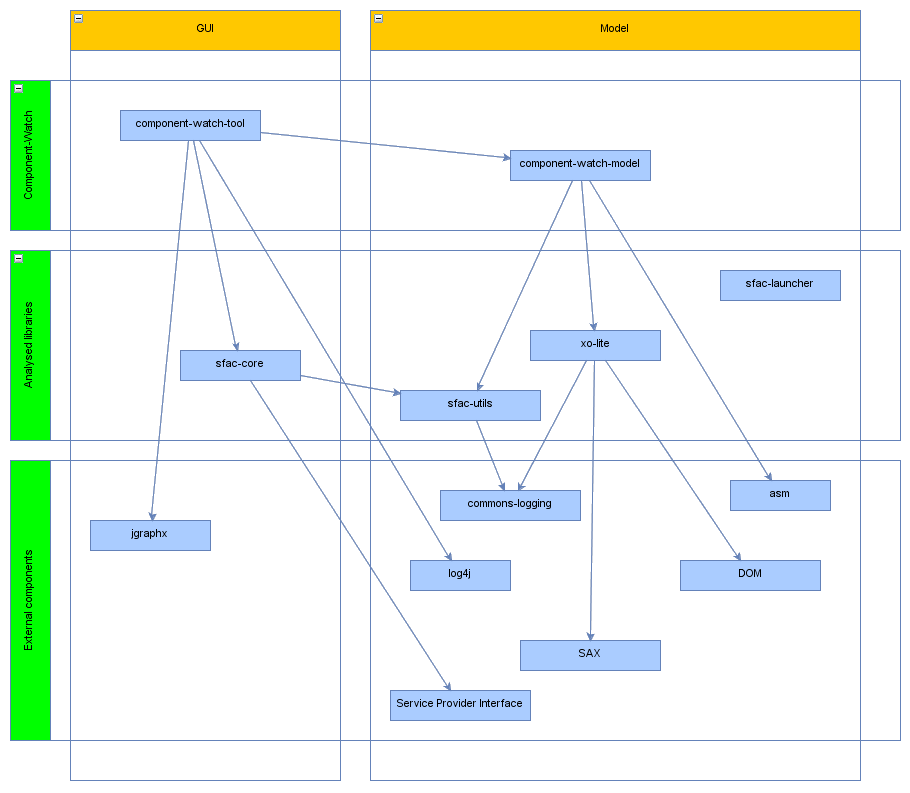This tool is born from the firm belief that, when you start developing an application, one of the key activity (along with gathering the user requirements) is to identify the main components of the future application and choose an overall structure for it. It will bring you the usual architectural promises like modularity, maintainability, reusability, stability...
It's not the purpose of this document to explain or prove this assertion, nor will it try to explain what is a good structure and componentization for applications (There are plenty of architectural books about that). The component-watch tool proposes a practical way to achieve it.
To practically succeed in defining this global structural view and a clean break-up into components you will have to do the following (in addition to having a clue about what is a suitable structure and components for your practical case, but for that no tool will help)
"Component-Watch" helps you to perform those tasks. It allows defining components and continuously applying the components definition to a set of jar files. The tool will deduce all the relations between components and check rule compliance.
In addition it allows defining diagrams showing a selected set of components and their relationships.
The tool provides a rich UI interface displaying components, jars and classes and their relationships.
By comparing Component-Watch to other code analysis tools, it is clear that the approach and goals are different.
| Other tool | Component-Watch |
|---|---|
| Analyses relations between jar files or java packages. |
Analyses relations between components that are defined with pattern matching expressions. |
| No high-level structure concept | Defines higher-level components to express application structure (like "layer", "tier", "subsystem" ...). |
| Evaluates generic design quality metrics Like "Afferent Couplings" or "Abstractness". |
Evaluates user-defined structure rules. |
| Deduce everything from sources or classes. | Allow the user to add information (to the analysed data) at several levels: * Component description * Structure definition * Structure rules * Diagram layout |
| Produces lot of reports. | Produces: * A single error report * UML-like graphs and provide a high-level user interface allowing clever browsing. |
Instead of generating metrics from code, Component-Watch let you express and enforce your code structure.
This is also obvious if you compare typical output like


At this stage, with only 11 jars, You can think that those two graphs are both clear and instructive but the main difference is that the second one already brings more information (in this case the fact that the application is partitioned in tree layers and two silos). This information was added 'manually', no automatic dependency tool can guess it. It will make a tremendous difference when the application will grow. You will be able you keep the second graph readable (and if needed to break it in simpler diagrams if it grows too much) while the first one will more and more look like a big spaghetti.
The Java platform modularisation (a.k.a. "Project Jigsaw") will allow specifying components (called modules) and their relationships in the java language itself. The "Component-Watch" project was initiated as a preparation for this "componentization".
Unfortunately "Project Jigsaw" is delayed again (It was initially planned for java 7, then for java 8, and now for java 9) and will not come before mid-2015.
Anyway, already thinking in term of components (and using "Component-Watch") helps you to prepare your code for future java-modules migration.